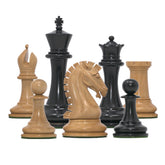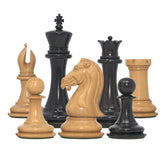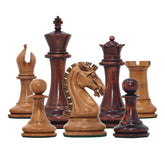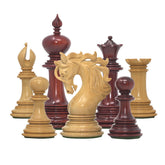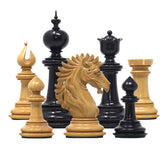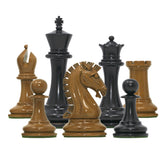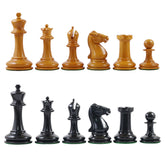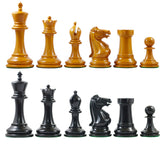HISTORY OF CHESS AND ITS ORIGIN CLASSIFICATION | ANATOMY | SET UP OF CHESS PIECES!
CHESS MYTHOLOGY
The origins of the ‘Royal Game’ comes from Mahabharata in 3000 BCE. Earlier it was known as ‘Shatranj’. It is an ancient form of the game which is concealed in legend.
According to Resources, the game originated during the time of Moses in Ancient Judea in Circa 1300 BCE. Most interestingly, It is believed that it was discovered during the reign of Alexander The Great of Macedonia Circa 323 BCE. Eventually, the game spread throughout Asia and Europe over the coming centuries and evolved into what we know as Chess around the 16th century. For more interesting facts about chess history, you need to go through the article.
FAMOUS NAMES OF CHESS
In Arabia Chess is known as Shatranj, In Persia Chatrang, In Mongolia, it is known as Shatar and In Ethiopia, it is known as Senterej. It emerged between the 8th and 10th centuries CE.
It has been widely accepted in modern chess. But again the board was a debatable thing among chess historians and the above version involved the ancient Indian game of Chaturanga in the back of the 5th and 6th centuries.
Chaturanga refers to the four main divisions of ancient Indian artillery which includes
The Infantry (Padati),
Cavalry (Ashwa),
Elephant (Gaja)
Heavy Cavalry or Chariot (Ratha) divisions.
It divides into these four armies.
The earliest discovered forms of ancient Chaturanga pieces along with respective modern Chess and the major decade was the European Migration.
HISTORY OF EUROPEAN MIGRATION

The earliest phase to Chess in Europe dates back to 1000-1050 CE. After 1100 CE, this period was very crucial because Chess began to take root amongst the European nations and worldwide.
The game’s birth in Europe has been widely spreading to the royal courts of Charlemagne, to King Arthur’s court in Camelot as well as to the siege of Troy.
During the renaissance or you can say rebirth, the popularity of Chess took root in Europe and became the most integral part of Aristocratic culture between the 14th and 16th centuries.
This was an important time in the history of chess when the chess appearances, the nomenclature, and the movement of chess began to flourish. Yes, some of the contemporary characteristics that we recognize today all began in the era.
AMALGAMATION OF THE DESIGN
The chess pieces from various regions of Europe retained absolutely few unique designs and characteristics. Undoubtedly, there were many common designs and you can see that there were substantial differences between them, which carry through well into the 19th century.
Slowly and gradually, it evolved into a seriously competitive game during the first half of the 19th century and the popularity of chess spread across the continent. Eventually, transcontinental competitions became commonplace. Certain regional designs and their variations in design sometimes gave a challenge for the players to recognize those from other regions. At this time a standardization of design was needed. So the research began in this era and definitely consolidation in design as well.
THE DEVELOPMENT OF THE STAUNTON DESIGN
The Staunton Chessmen were generally believed to have been designed by an English journalist named ‘’Nathaniel Cooke’’.
It was publicly released to the public in 1849, by Cooke’s brother-in-law, John Jaques, the owner of Jaques of London. One of the leading sports and games manufacturers of the time.
After the name and endorsement by Howard Staunton, an English Chess master. He reigned as world champion between 1843 and 1851. This Staunton chessman was established as the global standard for Chessmen design.
Nomenclature | Anatomy | Set up of Chess Pieces
Widely perceived to be the perfect amalgamation of form and function, the designs were believed to have been inspired by English Neo-classical and Victorian architecture with a strong Greco-Roman influence.
ANALYSIS AND CLASSIFICATION OF STAUNTON CHESSMEN
The Chessmen were designed to feature and resemble columns with wide diagonal bases. The chess pieces were weighted with lead for heft and stability. Each of the Chessmen was topped by characteristic design features that identify them.
The king was the tallest piece with a wide base in the making of chess pieces. He wears the crown which makes him look separate from all. Then the second tallest, The Queen, wears a coronet, topped by a ball. The Bishops wear headbands.
The Pawns were topped by a simple ball. The most unique of all chess pieces, The Knights, are the ones that depart the most. They have no shanks or collars and depict the shape of a horse’s neck and head. These pieces are also referred to as horses. The Knights were the show-stoppers among Chessmen.
Last but not least The Rooks differ from the established design. They represent a tower with a cleft top and feature no shanks or collars. They are also referred to as Castles.
THE CHESS SET-UP
In Chess, there are 32 chessmen, One side 16 dark-colored and on the other side 16 light-colored. Each side includes:-
8 Pawns
2 Rooks or Castles
2 Knights or Horses
2 Bishops
1 queen
1 King
The Chessboard has 64 dark and light-colored pieces in the squares, consisting of eight ranks and eight files. In detail the horizontal rows with four dark and four light-colored squares, and the vertical columns with four dark and four light-colored squares each.
The Chess board is intelligently balanced so that the two players have light-colored squares at the extreme right-hand corners of the rank closest to them. The chessmen are arranged along the two ranks nearest to each player at the start of the game and the chessmen of opposing players face each other.
The front row holds eight pawns each, while the behind ranks are arranged as follows:
Two Rooks or Castles at the two extremes
Two Knights or Horses next to the two Rooks
Followed by the two Bishops
The King and Queen bring up the core of the rear.
The Queen always occupies the matching square, black on black, and white on white. The King occupies the remaining position.
So, this is all for now. Hope you like this article and are happy to know about Chess's origin, its names, and the setup.
For more such interesting articles visit at www.stauntoncastle.com
Order Luxury Chess Sets and Pieces Here - www.stauntoncastle.com
HAPPY CHESS!
